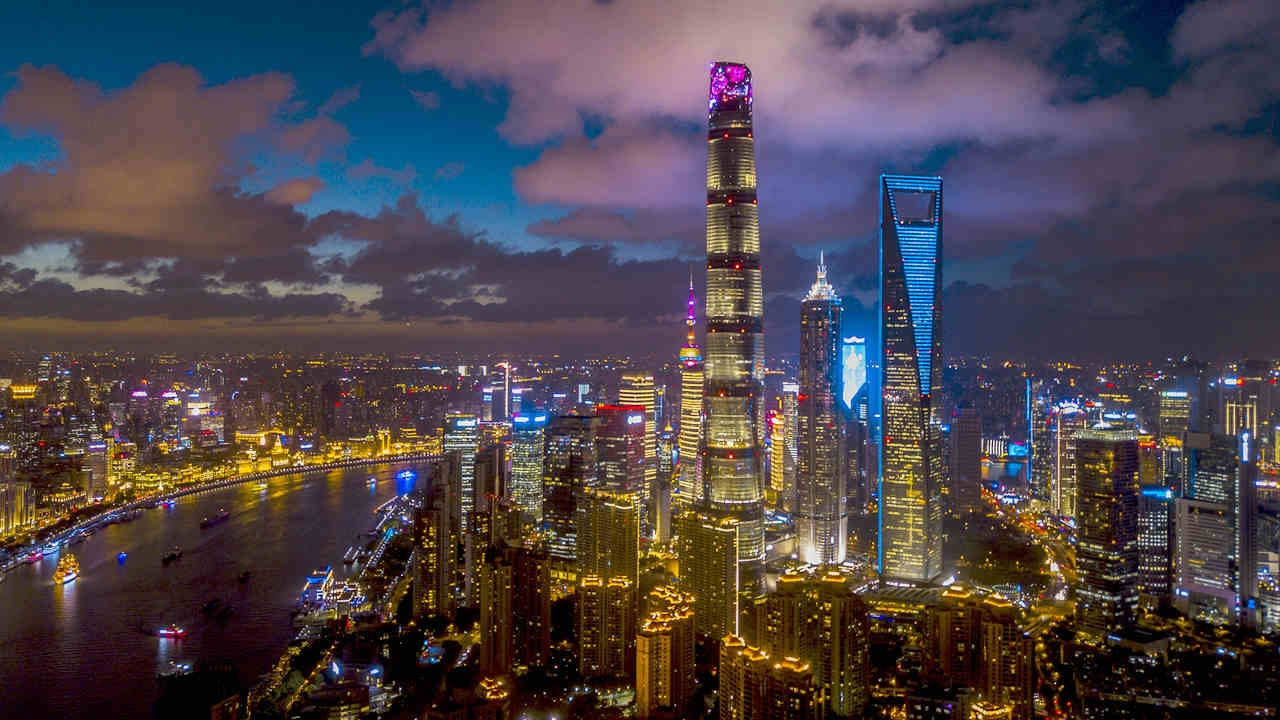
Night scene of Lujiazui district, Shanghai, China. /VCG Photo
Night scene of Lujiazui district, Shanghai, China. /VCG Photo
Editor's note: David Lee is a Beijing-based consultant and author who focuses on energy, health, international politics and international development. The article reflects the author's opinions, and not necessarily the views of CGTN.
The McKinsey Global Institute (MGI) analyzes the mutual exposure of China and the rest of the world on trade, technology, and capital. From 2000 to 2017, the world's exposure to China increased on all three fronts, while China's exposure to the world fell. These findings were compiled into MGI's latest China-World Exposure Index published in July.
By charting the shifting China-world exposure over the years, MGI is raising some big questions about China's integration into the global community: Could we be at peak integration between China and the world after many years of deepening ties? What opportunities could more engagement offer? What value could be at stake for all players?
MGI's index seems to suggest an underlying concern about the perceived peak integration. In other words, a rising China is not being integrated into the global community. Instead, the underlying fear is that China may take advantage of the world's exposure to it. This kind of China-world mutual exposure, as the underlying logic goes, will of course put "value at stake," where China's economic gains will be achieved at the expense of the rest of the world.
MGI is approaching the China-world exposure variable from the perspective of the global business community, and "value at stake" refers to business and economic value. However, the same questions posed by MGI can be extended and apply to the overall strategic relationship between China and the world. As such, value involves not only business, but also strategic interests concerning both China and the world.
Indeed, MGI has collected long-term data and compiled it into some fascinating analyses. I'm not writing an essay to dispute all the data analyses done by MGI, but I'm offering a new look from a strategic point of view to mitigate any concern about "peak integration."
Integration, as a status, is never static, but is constantly changing. If we imagine China-world exposure as a continuum – on one end there is integration, and on the other disintegration. The actual status at one point of time is reflected as a point somewhere found along the continuum.

The WTO headquarters in Geneva, Switzerland, September 21, 2018. /VCG Photo
The WTO headquarters in Geneva, Switzerland, September 21, 2018. /VCG Photo
In this simple and straightforward model, it's safe to say that over the past four decades since the inception of China's reform and opening-up process, the status point has been steadily moving closer to the end of integration.
If we combine a timeline with the continuum, we'd see significant movements happening to China's integration status along the continuum (i.e. moving significantly closer to the end of integration following key milestones). China's ascension into the World Trade Organization (WTO) and key domestic policy changes, including the latest policies to break down existing barriers in the financial sector, represent such milestones.
However, China's integration into the world is not so simple or straightforward. The world itself is changing fast, particularly since the 2008 global financial crisis. That said, the linear continuum of China integration is increasingly being distorted by external forces.
Currently, the biggest distorting force is America's conscious decoupling effort. While the world's only superpower is determined to create decoupling, it'd be extremely naive to say any country, China included – despite it being the world's second biggest economy – can hope for a smooth engagement with the rest of world.
That said, shifting China-world exposure itself should not be a concern. On the part of China, when its reform is entering into the "deep-water zone," the country understands clearly that greater openness can help address structural development challenges and is moving exactly towards more intense engagement with the rest of the world. On the part of the international community, development-driven comrades are keen to embrace the Chinese opportunity.
What's of concern, therefore, is the ulterior external force that looks to derail the integration process. Under the dark shadow of the decoupling campaign, we may well see "peak integration," as all China-related trade, technology and capital are being threatened.
I like the fact that MGI offers the China-World Exposure Index, but I hope the international community can look beyond the business-focused index to understand the larger political economic dynamics at play here. More importantly, the international community should be careful of the menace of the developing American decoupling campaign.
(If you want to contribute and have specific expertise, please contact us at opinions@cgtn.com.)